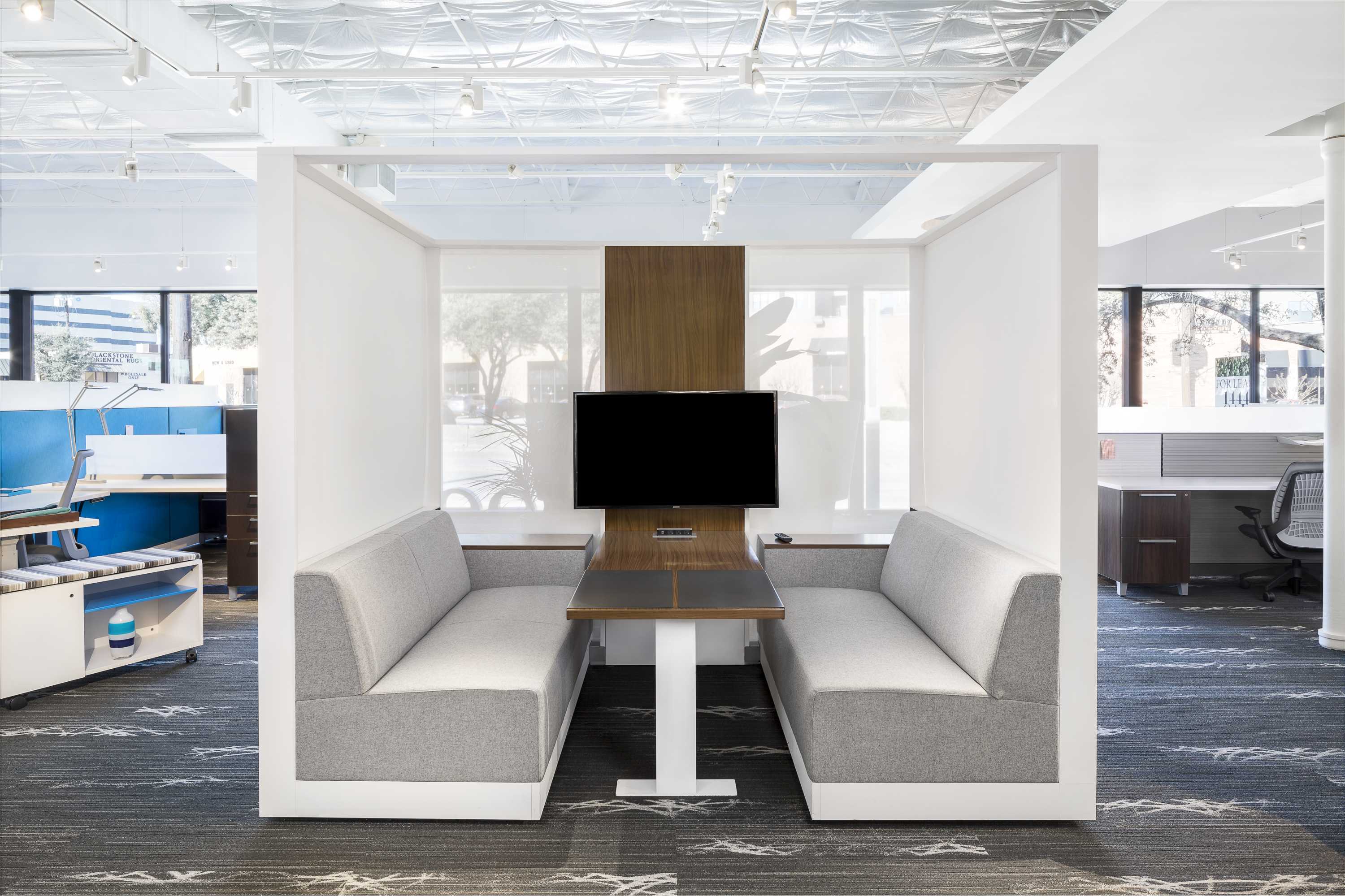The Future of Work: How COVID-19 will change the workplace
The COVID-19 pandemic upended our work life by altering how and where we do our jobs, tested how businesses can adapt to flexible work and schedules, and made us rethink the future of work. Do office layouts as we currently know them still make sense in this “new normal?”
At the pandemic’s peak, around 42% of the U.S. labor force was working from home full-time, according to Stanford News. Now, over a year later, the nation is transitioning to “post-COVID” working and living. Employers are looking to create safe and effective spaces as workers return to the office. Or alternatively, ways to keep employees effectively working from home for the foreseeable future.
►Work from Home: Flexible Solutions for Every Home Office
In the last year, companies have discovered that remote work, consequently trusting employees, is not only possible but in many cases profitable. Companies are now questioning the need for the static offices they had before. However, completely eradicating physical workspaces and offices seems unlikely, many organizations are looking to reopen and what challenges they may face.
So, if the general population won't be going back full-time to the office, but also won’t be staying at home full-time – what is the future of workspaces? In this blog post, we’ll divulge into some of the trends some employers may adopt post-COVID.
Workstations that Prioritize Physical Distancing
Physical distancing during the pandemic has been imperative to reducing the spread of coronavirus. It’s not clear whether governments may or may not continue to mandate the full 6-foot distance we currently adhere to, but some distance may remain – which means offices may look different moving forward.
Whether individual work areas increase in size to create proper social distancing boundaries or offices provide more free space between them, creating distance between employees might stick around and it will ultimately be up to each business.
Additionally, businesses may consider adding more permanent “workstation enclosures” like transparent plastic or glass screening panels that provide protection, as well as pedestrian lanes to keep traffic flowing in an orderly fashion.
Open Floor Plans Aren’t Going Anywhere
Just as physical distancing may stick around, it’s no surprise that open floor plans will as well. There have been a variety of opinions over the last decade on the pros and cons of assigned and unassigned seating, however unassigned seating has an advantage. This kind of workplace setting is often easier to maintain with clean desk policies, which allows for faster and more thorough cleaning.
Businesses who have relied on open layouts in the past may continue to do so, and will look to a wider variety of table shapes, sizes, heights, and capabilities which can support employees and distancing mandates as needed. A table that could previously fit 8 people may now accommodate only 3. However, those 5 other employees may be able to work from home due to more flexible work schedules (which we predict will continue to grow in numbers).
The office furniture of a post-COVID workforce will likely utilize lighter scale materials for reconfiguration ease and if businesses don’t already have assigned mobile supply caddies, they may consider adapting to them to reduce sharing.
 (Photo: HON Build, courtesy of HON)
(Photo: HON Build, courtesy of HON)
Shrinking Conference Rooms
Video conferencing has cemented itself into the current workforce and much like physical distancing and flexible schedules, doesn’t look like it’s going anywhere anytime soon. Because of this, traditional conference rooms and meeting spaces may shrink. People have found ways to successfully collaborate virtually, so the office will need to have spaces to support collaboration in ways that working from home cannot.
If meetings do occur out in the open, the next generation of collaborative office furniture will have to include better acoustic capabilities and technology integration, to ensure remote workers can connect with ease. This could very well result in even more flexible, movable, and adaptable meeting spaces that can be designated and divided as necessary.
Embracing Unconventional Functionality
Several companies will be forced to embrace unconventional functionality to meet every employee’s different needs. That could look like the reemergence of phone booths, creating smaller conference rooms, or arranging “clubhouse” seating. Returning to the office means returning to collaboration, however with new models that focus on less meeting room congestion and more on workplace experience for one-on-one conversations. There is a new focus on flexible, modular office furniture.
Employers are shifting their preferences for furniture that supports one or few purposes and instead are looking to manufacturers that have pieces that not only address different working styles, but meet the demand for more resiliency, longevity, and usability.

(Photo: Allsteel Clubhouse, courtesy of Allsteel)
Heightened Focus on Finishes and Technology
As stated earlier, collaborative office furniture may undergo some changes to better adapt with the needs of the current workforce. Companies will be looking for unique and custom solutions to suit their specific needs with a focus on functional furniture and appliances.
Companies will be looking to “future-proof” as much of their workspaces as possible, by carefully selecting finish materials that are designed to withstand heavy use, but also antimicrobial and can be sanitized easily. Appliances in kitchens, pantries, and bathrooms will incorporate innovation and technologies that require limited touching and sharing for a safer and cleaner work environment.
Re-Imagining the Office after COVID-19
COVID-19 upended jobs and we’ve tried to adapt, but what about in the long term? The next pivot in office furniture trends is one that supports activity-based working while giving individuals more control and flexibility. Figuring out how to design products for safe collaboration is key for furniture manufacturers. COVID-19 taught us the importance of flexibility, adaptability, and trust from economic, sustainable, and health perspectives.
Find more post-COVID-19 resources here, including what a safe and effective workplace will look like as workers return to the office. Or ways to keep employees effectively working from home.

